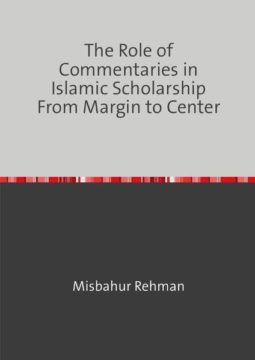Commentaries (shurūh, hawāshi, taʿliqāt, taqrīrāt) have been an integral part of Islamic scholarly literature from its early emergence to its developed form in the Middle Ages and then its decline in the nineteenth century. The vast literature has received very little attention from scholars of Islamic studies. Scholars such as N. J. Coulson, Fazlur Rahman and H. A. R. Gibb seem to have placed commentaries under the category of “unoriginal” works, labeling them a waste of intellectual energies and the product of mental stagnation which exhibited itself in slavish adherence not only to the substance but also to the form and arrangement of the doctrines recorded in the earliest writings. But such a view fails to explain why some of the most authoritative scholars such as Sarkhasi and Marghinani engaged in such allegedly futile exercise.
This study not only explores and provides evidence for the claim to originality and creativity by the authors of commentaries, but more importantly, tries to explain why they preferred to write commentaries instead of original books. It is argued that commentaries represent oral lectures and discussions of the teachers – written, reworked and then transferred by the students to the next generation of students. They are the product of oral culture and appear as the first sign of a shift from an oral to a written culture fairly earlier than the emergence of books. The study further explains that even after a shift from oral to written tradition, people continue to rely on oral transmission for centuries and books only gradually get wider acceptance. Thus, as long as an oral tradition continues in a society, commentaries occupy central stage, representing the transmission of knowledge, while books remain peripheral and marginal.
- Veröffentlicht am Donnerstag 25. März 2021 von epubli
- ISBN: 9783753179582
- 296 Seiten
- Genre: Belletristik, Essays, Feuilleton, Interviews, Literaturkritik
